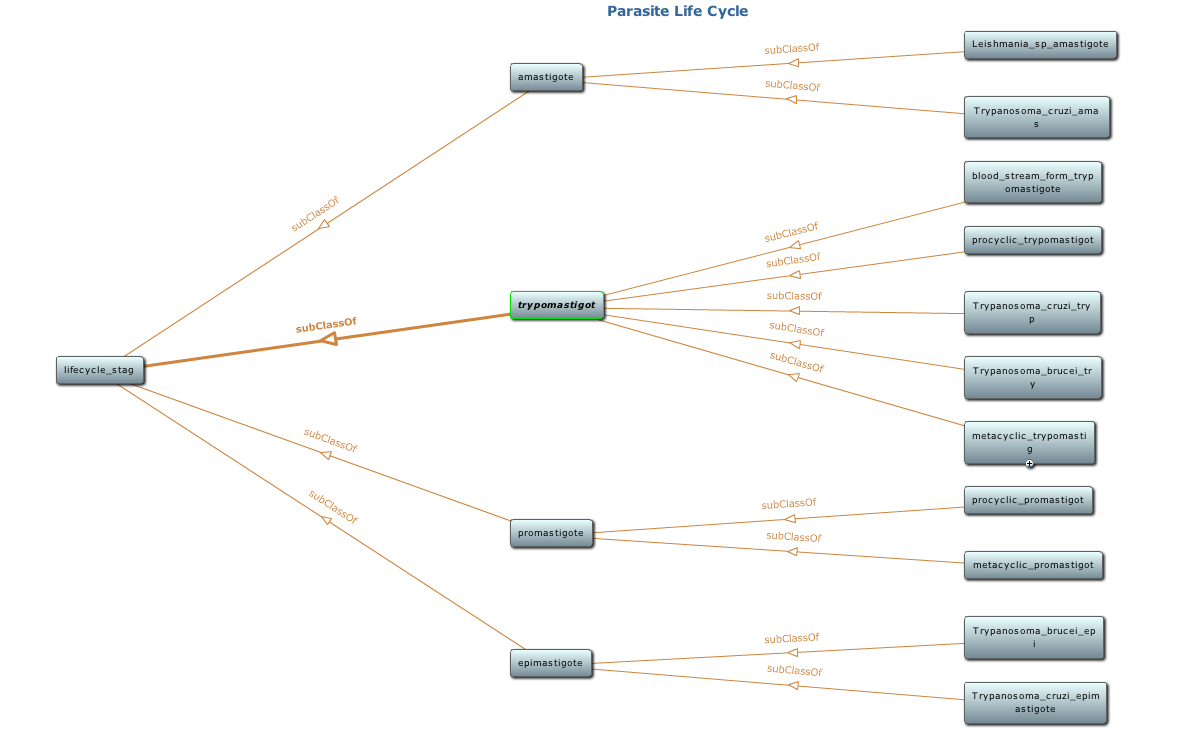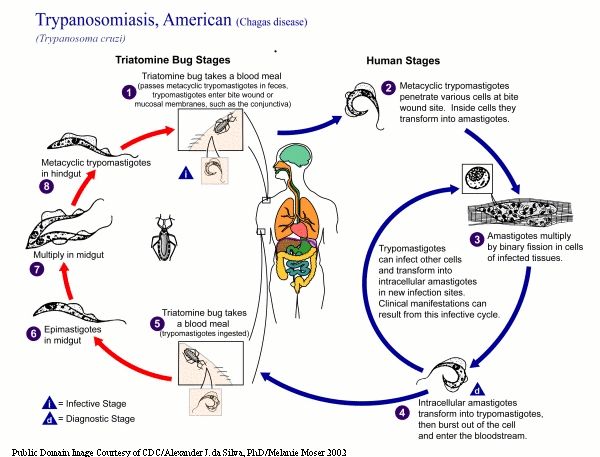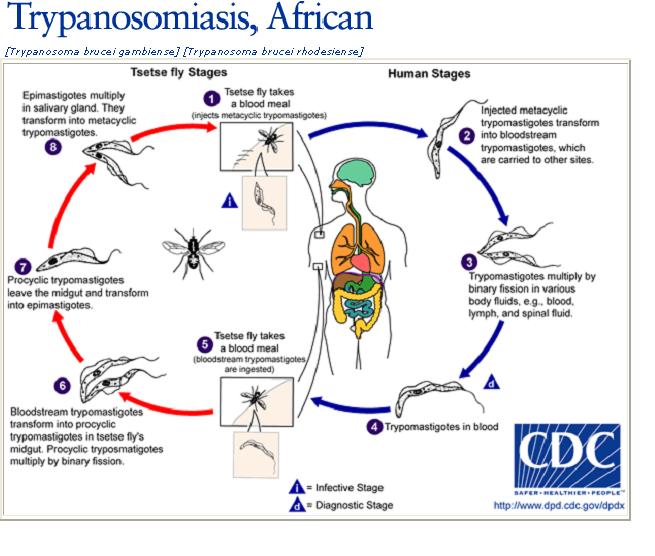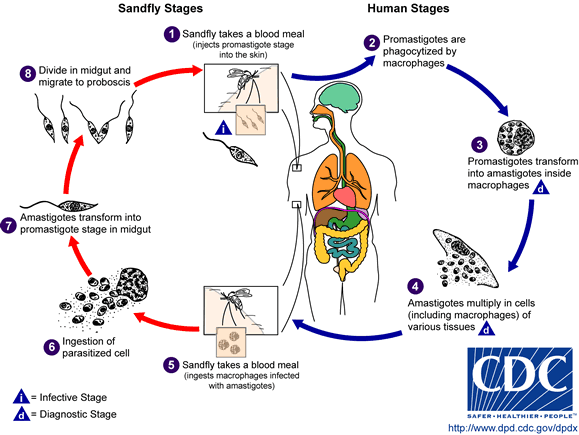Difference between revisions of "Ontology for Parasite Life Cycle"
m (moved Parasite Life Cycle ontology to Ontology for Parasite Life Cycle: Name changed!) |
|||
| (11 intermediate revisions by 3 users not shown) | |||
| Line 2: | Line 2: | ||
{{block | {{block | ||
| − | |title= What is Parasite Lifecycle | + | |title= What is the Ontology for Parasite Lifecycle (OPL)? |
|title_background=#b0e2ff | |title_background=#b0e2ff | ||
| − | |content= | + | |content= OPL models the life cycle stage details of ''T.cruzi'' and two related kinetoplastids, ''Trypanosoma brucei'' and ''Leishmania major''. In addition, the ontology also models necessary contextual details such as host information, vector information, strain and anatomical location. All the entities in the ontology are linked to each other by explicitly modeled named relationships that will enable software applications to accurately interpret data annotated with this ontology. For example, “Trypanosoma_cruzi→has_vector_organism→triatominae”. The PLO is modeled in the W3C Web Ontology Language (OWL) standard and currently has 41 classes and 5 properties with a description logic expressivity of ALU. OPL(ver 0.1), which was called Parasite Lifecycle Ontology is released through NCBO’s BioPortal repository for public use. |
}} | }} | ||
<!--end section 1 --> | <!--end section 1 --> | ||
| Line 92: | Line 92: | ||
***********[[Schistosoma_Mansoni_Daughter_Sporocyst|schistosoma_mansoni_daughter_sporocyst]] | ***********[[Schistosoma_Mansoni_Daughter_Sporocyst|schistosoma_mansoni_daughter_sporocyst]] | ||
***********[[Schistosoma_Mansoni_Mother_Sporocyst|schistosoma_mansoni_mother_sporocyst]] | ***********[[Schistosoma_Mansoni_Mother_Sporocyst|schistosoma_mansoni_mother_sporocyst]] | ||
| − | **********[[ | + | **********[[Schistosoma_Mansoni_Cercaria|schostosoma_mansoni_cercaria]] |
| − | **********[[ | + | **********[[Schistosoma_Mansoni_Egg|schostosoma_mansoni_egg]] |
| − | **********[[ | + | **********[[Schistosoma_Mansoni_Miracidium|schostosoma_mansoni_miracidium]] |
| − | **********[[ | + | **********[[Schistosoma_Mansoni_Schistosomulum|schostosoma_mansoni_schistosomulum]] |
| − | ***********[[ | + | ***********[[Schistosoma_Mansoni_24_Hour_Schistosomulum|schistosoma_mansoni_24_hour_schistosomulum]] |
| − | ***********[[ | + | ***********[[Schistosoma_Mansoni_3_Day_Schistosomulum|schistosoma_mansoni_3_day_schistosomulum]] |
| − | ***********[[ | + | ***********[[Schistosoma_Mansoni_3_Hour_Schistosomulum|schistosoma_mansoni_3_hour_schistosomulum]] |
| − | ***********[[ | + | ***********[[Schistosoma_Mansoni_6_Day_Schistosomulum|schistosoma_mansoni_6_day_schistosomulum]] |
| − | **********[[ | + | **********[[Schistosoma_Mansoni_Worm|schistosoma_mansoni_worm]] |
| − | ***********[[ | + | ***********[[Schistosoma_Mansoni_3_Week_Worm|schistosoma_mansoni_3_week_worm]] |
| − | ***********[[ | + | ***********[[Schistosoma_Mansoni_7_Week_Worm|schistosoma_mansoni_7_week_worm]] |
*********[[Schistosoma_haematobium|schistosoma_haematobium]] | *********[[Schistosoma_haematobium|schistosoma_haematobium]] | ||
**********[[Schistosoma_Haematobium_Cercaria|schistosoma_haematobium_cercarcia]] | **********[[Schistosoma_Haematobium_Cercaria|schistosoma_haematobium_cercarcia]] | ||
| Line 289: | Line 289: | ||
<ul> | <ul> | ||
<li>[[24 Hour Schistosomulum Stage]]</li> | <li>[[24 Hour Schistosomulum Stage]]</li> | ||
| − | <li>[[3 Day Schistosomulum | + | <li>[[3 Day Schistosomulum Stage]]</li> |
<li>[[3 Hour Schistosomulum Stage]]</li> | <li>[[3 Hour Schistosomulum Stage]]</li> | ||
<li>[[3 Week Worm Stage]]</li> | <li>[[3 Week Worm Stage]]</li> | ||
| Line 301: | Line 301: | ||
<li>[[Anopheles]]</li> | <li>[[Anopheles]]</li> | ||
<li>[[Anopheles Midgut]]</li> | <li>[[Anopheles Midgut]]</li> | ||
| − | <li>[[ | + | <li>[[Anopheles Salivary Gland]]</li> |
</ul> | </ul> | ||
| Line 317: | Line 317: | ||
;C | ;C | ||
<ul> | <ul> | ||
| − | <li>[[Canis | + | <li>[[Canis familiaris]]</li> |
<li>[[Cell]]</li> | <li>[[Cell]]</li> | ||
<li>[[Cercaria Stage]]</li> | <li>[[Cercaria Stage]]</li> | ||
| Line 354: | Line 354: | ||
<li>[[Hepatopancreas]]</li> | <li>[[Hepatopancreas]]</li> | ||
<li>[[Hindgut]]</li> | <li>[[Hindgut]]</li> | ||
| − | <li>[[Homo | + | <li>[[Homo sapiens]]</li> |
<li>[[Host Role]]</li> | <li>[[Host Role]]</li> | ||
<li>[[Human Blood]]</li> | <li>[[Human Blood]]</li> | ||
| Line 412: | Line 412: | ||
<li>[[Miracidium Stage]]</li> | <li>[[Miracidium Stage]]</li> | ||
<li>[[Mollusca]]</li> | <li>[[Mollusca]]</li> | ||
| − | <li>[[Mus | + | <li>[[Mus musculus]]</li> |
</ul> | </ul> | ||
</td> | </td> | ||
| Line 625: | Line 625: | ||
<!--start section 3 --> | <!--start section 3 --> | ||
{{block | {{block | ||
| − | |title= Organisms in | + | |title= Organisms in OPL |
|title_background=#b0e2ff | |title_background=#b0e2ff | ||
| − | |content= Here is brief description and life-cycles of the organisms that are covered in | + | |content= Here is brief description and life-cycles of the organisms that are covered in OPL. |
{{block | {{block | ||
|title= ''Trypanosoma cruzi'' | |title= ''Trypanosoma cruzi'' | ||
Latest revision as of 18:35, 9 June 2011
| What is the Ontology for Parasite Lifecycle (OPL)? |
|
OPL models the life cycle stage details of T.cruzi and two related kinetoplastids, Trypanosoma brucei and Leishmania major. In addition, the ontology also models necessary contextual details such as host information, vector information, strain and anatomical location. All the entities in the ontology are linked to each other by explicitly modeled named relationships that will enable software applications to accurately interpret data annotated with this ontology. For example, “Trypanosoma_cruzi→has_vector_organism→triatominae”. The PLO is modeled in the W3C Web Ontology Language (OWL) standard and currently has 41 classes and 5 properties with a description logic expressivity of ALU. OPL(ver 0.1), which was called Parasite Lifecycle Ontology is released through NCBO’s BioPortal repository for public use. |
|
|
 Snapshot of class hierarchy of the parasite life cycle ontology using Protege toolkit. Detail of this ontology is available at NCBO BioPortal |
| Organisms in OPL | ||||||
|
Here is brief description and life-cycles of the organisms that are covered in OPL.
|
| Feedback/Comments |
|
Please add feedback/comments in Discussion Section on the top of this wiki page. |


